GSMArena smartphone buyer's guide: May 2015
May 2015
€100-€200
This category ended up longer than we had intended – there are some phones that are just above the competitors of the previous chapter, there are some with great photography skills, some with large screens and some for the shrewd, tech-savvy shopper.
There's so much competition that we added a few paragraphs of side-by-side comparisons. For example, Motorola's Moto E (2015), Moto G 4G and Moto G (2014) are similar in price and features, so we're offering some extra guidance on picking the right one.
Time for HTC to join the party. The Desire 320 doesn’t have the features that make flagship HTC's so popular, but for some premium over the Moto E you get four CPU cores and 1080p video capture, VGA selfie camera too. Note that the North American version has only 512MB RAM and lacks an LED flash, while the European version has the flash and comes with 1GB of RAM.
Anyway, the screen is slightly bigger, but not as sharp as the Motorola’s. You get Sense-ified Android 4.4 KitKat, which some love, but it will lag behind the Moto E in updates.
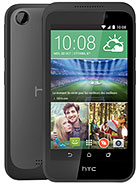
HTC Desire 320 |
Pros |
Cons |
|
|
|
|
We'll admit that one of the biggest draws for the Desire 320 is the HTC brand. Without that at almost the same price you can get the Alcatel Idol 2 Mini S, which measures just 8.5mm thick, weighs 116g, and is more compact than both the HTC and the Moto E. It has a 4.5" IPS screen with qHD resolution and an 8MP/1080p camera. And if that wasn’t enough of an advantage over the Desire 320, the Idol 2 Mini S has LTE connectivity.
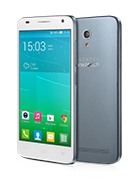
Alcatel Idol 2 Mini S |
Pros |
Cons |
|
|
|
|
| Review |
A more recognizable brand name is the Sony Xperia E4g. It packs a larger screen, 4.7" IPS with qHD resolution, and while not quite as thin (10.8mm), it's reasonably light (135g). It runs Android 4.4 KitKat on a 64-bit quad-core Cortex-A53 processor at a higher clockspeed and also records 1080p video with its 5MP camera. The Xperia E4g is available in dual-SIM flavor too.
At essentially the same price the Xperia E4g and Idol 2 Mini S, Sony's brand name may prove the deciding factor, but the Alcatel has pretty solid build quality and is alluringly compact. Whether either phone will get updated to Android 5.0 is uncertain. Sony has committed to delivering Lollipop updates for the Xperia Z series, but we've heard nothing on the Xperia E4g.

Sony Xperia E4g |
Pros |
Cons |
|
|
|
|
| Review |
If current software is a must, the Motorola Moto E (2015) is a solid choice. While the 5.1 update is not yet available, it's coming soon and you get Android 5.0 Lollipop to play with until then. It has a 64-bit quad-core processor too, but doesn’t use 64-bit software either – while Android 5.0 does support it (4.4 does not), Motorola has stuck to the 32-bit version of the OS.
The Moto E (2015) screen is slightly smaller than the one on the Sony, 4.5" with Gorilla Glass 3, and the 5MP camera tops out at 720p. It's also rather thick and heavy, 12.3mm and 145g, but build quality is superb on this generation. Also, the 3G version has an old and underpowered 32-bit chipset, so we'd pick the 4G LTE model.

Motorola Moto E (2nd gen) |
Pros |
Cons |
|
|
|
|
| Review |
Amazon's Fire Phone was a commercial failure so you can snag one on the cheap. The specs are better than similarly priced phones – the Snapdragon 800 chipset crushes all others so far (for gaming especially) and you get 2GB RAM. The device also boasts a 13MP camera with 1080p video and optical stabilization.
It has a nice 4.7" 720p display with 3D Dynamic Perspective UI, plus stereo speakers. There's no microSD slot, but you get 32GB as default and the 64GB model is only €20 more.
Keep in mind that this one runs Amazon Fire OS out of the box, which is a heavily customized Android to tie it to Amazon services. Unless you're okay with that, the Amazon Fire Phone is only for frequent visitors of XDA-Developer community website. There's no CyanogenMod yet, but you can root the phone and install Google Apps. If rooting and side-loading don’t mean much to you, you’d be better off with the vanilla UI.
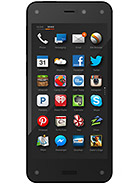
Amazon Fire Phone |
Pros |
Cons |
|
|
|
|
Another phone with a custom Android version is the Xiaomi Redmi 2. MIUI 6.0 is closer to regular Android though and you get Google Apps out of the box. The screen is similar, 4.7" 720p, and while the chipset is less powerful with four Cortex-A53 cores, there's a version with 2GB RAM.
The 8MP camera on the back with 1080p video is pretty competitive too. The Redmi 2 also has a microSD card slot (but starts with only 8GB or 16GB) and a second SIM slot.
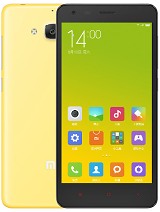
Xiaomi Redmi 2 |
Pros |
Cons |
|
|
|
|
| Review |
Microsoft's mid-range recently received a big boost with the 640 devices. The Microsoft Lumia 640 Dual SIM has a 5" 720p screen with Gorilla Glass 3 and ClearBlack (a tech that improves sunlight legibility), plus an 8MP camera with 1080p video capture. The quad-core Cortex-A7 with 1GB of RAM is what keeps this phone from going higher up the ladder, but the Windows 10 update is guaranteed.
Compared to the Lumia 535, you get a sharper screen, a better camera – the difference in video capture is night and day – and a solid 2,500mAh battery. There's no 5MP selfie camera though, you'll have to make do with a 1MP/720p one. It looks like Microsoft wants to evict Android from the lower mid-range, the same way it's pushing it out of the entry level.
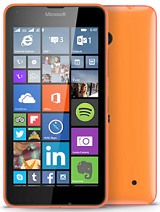
Microsoft Lumia 640 Dual SIM |
Pros |
Cons |
|
|
|
|
While nostalgia doesn’t have much place in tech, if you haven’t gotten the hang of fast on-screen typing then you may be longing for the hardware QWERTY days. The BlackBerry Q5 has that, plus a relatively small 3.1" 720 x 720px screen. On-screen keyboards tend to take up plenty of room, so for texting and email at least, the 3.1-inch screen will be providing enough room for typing.
Also, BlackBerry is still laser focused on security. The 5MP/1080p camera is competitive with other phones in this segment and you get some Android compatibility though we wouldn’t rely too much on it.

BlackBerry Q5 |
Pros |
Cons |
|
|
|
|
| Review |
The LG G2 mini has a screen-to-body ratio over 70%, which is competitive with current flagships. Its thin bezels keep it compact for its 4.7" screen and you get the LG-pioneered design with buttons on the back (which other companies are adopting). The 8MP/1080p camera is quite good, even though the qHD screen resolution doesn’t do it justice.
The quad-core Cortex-A7 processor doesn’t live up to the big G2 flagship but is the norm for this price range, aside from a few Cortex-A53 CPUs. Currently, the LG G2 mini runs Android 4.4 KitKat with some goodies like tap to wake (KnockON as LG calls it), but the company hasn’t made any official plans to update it to 5.0 Lollipop.
Be aware that there are three variations of the phone and we have the LTE one in mind. There's also a 3G dual-SIM version and one with LTE but with a Tegra 4i chipset (that's the Latin American version).
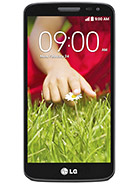
LG G2 mini LTE |
Pros |
Cons |
|
|
|
|
| Review |
Perhaps a better Android-powered competitor to the Lumia 640 is the ZTE Blade Vec 4G. It's a single-SIM phone, but it has a 5" 720p display, a 13MP or 8MP camera (region dependent) with 1080p video and runs Android 4.4 KitKat on the same Snapdragon 400 chipset. The Vec 4G is thin (7.8mm) and has an attractive carbon-fiber pattern on the back.
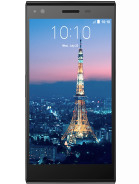
ZTE Blade Vec 4G |
Pros |
Cons |
|
|
|
|
The LG G2 mini screen quality and Android updates may be iffy, but the Motorola Moto G 4G has a 4.5" 720p screen and the Android 5.1 Lollipop update is pending. The 5MP/720p camera isn’t as nice though and while the Moto G is thicker, it has a smaller, non-removable battery.
Do have a look at the new Moto E (2015) before you commit to buying it, it actually comes with a newer chipset, the camera is essentially the same and has a slight lead in Android updates. The screen is no match though, which is probably not worth the €20 drop in price.
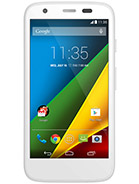
Motorola Moto G 4G |
Pros |
Cons |
|
|
|
|
| Review |
While you'll have to pay a premium over the Blade Vec 4G, the second gen Motorola Moto G has a 5" 720p screen with Gorilla Glass 3 that's flanked by stereo speakers. Also, the 8MP/720p camera is more competitive than what the Moto G 4G brings and the Android 5.0 Lollipop update is incoming.
The choice between a Moto G 4G and the second-gen Moto G is largely about the screen size. The chipset and software are identical, the camera is pretty close too. You do get stereo speakers with the 2014 model though, that alone might be enough for some.
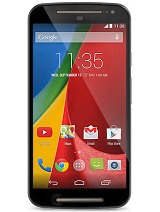
Motorola Moto G (2nd gen) |
Pros |
Cons |
|
|
|
|
| Review |
To be fair, the LG G2 mini is getting long in the tooth. The latest phone of this size, the LG Spirit, has a 4.7" 720p screen without being much bigger and has the same back button design. Also, it comes with Android 5.0 Lollipop straight out of the box.
There are two versions – one with a 64-bit processor and 8MP camera and one with 32-bit CPU and 5MP camera. It's obvious which one we prefer, make sure to double check the specs before forking over the cash.
The Nokia Lumia 730 Dual SIM has a 4.7" screen with 720p resolution too, but it's an OLED (with ClearBlack tech). The phone has a stronger focus on the camera with a 6.7MP sensor (6.1MP effective, 16:9 aspect ratio), Carl Zeiss optics and a 5MP selfie camera. Both cameras can shoot 1080p video.
The Lumia 735 is an LTE-enabled, single-SIM version of this phone. Both will be updated to Windows 10 when it comes out.
Its predecessor, the Lumia 720, has a 6.7MP camera with Carl Zeiss optics too and boasts an impressive f/1.9 aperture. However, it has a smaller 4.3" IPS LCD display at just 480 x 800px resolution. There's no dual-SIM or LTE, no 5MP selfie camera either. It's roughly the same price, but we think the Lumia 730/735 is definitely the better choice.

Nokia Lumia 730 Dual SIM |
Pros |
Cons |
|
|
||
So far 5" was the biggest screen diagonal, but many will find that too small. The Sony Xperia T3 edges up from that with a 5.3" 720p screen. While the 7mm-thick chassis is impressively thin, the other dimensions (150.7 x 77mm) are too much even for this screen size. The 2,500mAh battery is smaller than you would expect.
Still, you get Android 4.4 KitKat on the Snapdragon 400 chipset that is inside so many phones in this category and an 8MP camera with 1080p video capture.

Sony Xperia T3 |
Pros |
Cons |
|
|
|
|
| Review |
You can go even bigger with the Huawei Honor 4X and its 5.5" 720p screen. It has an octa-core 64-bit processor (Cortex-A53 cores) with 2GB of RAM. The camera department has an edge too, a 13MP/1080p camera plus 5MP selfie camera. And unlike the Xperia T3, the Honor 4X is officially on its path to Android 5.0. Additional advantages are the dual-SIM connectivity and the bigger battery.
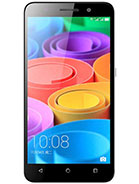
Huawei Honor 4X |
Pros |
Cons |
|
|
||
| Review |
The Meizu m1 note ups the resolution to 1080p. The 5.5" display has an IGZO matrix, a type of LCD usually found on high-end devices, and a pixel density of over 400ppi, which was flagship level spec a year ago. It's powered by an octa-core 64-bit processor like the Honor 4X, but comes with an older Android 4.4 KitKat.
The camera department matches the Huawei too – 13MP/1080p main camera and 5MP selfie shooter. The Meizu m1 note is a dual-SIM device, but the second slot doubles as a microSD slot. So if you need more than the base 16GB or 32GB storage you'll have to settle for only temporary dual-SIM use.

Meizu m1 note |
Pros |
Cons |
|
|
|
|
| Review |
The final phablet in this price range goes up another 0.2" step. The Microsoft Lumia 640 XL has a 5.7" 720p screen and will be getting update to Windows 10 in due time. It has a 13MP/1080p camera with Carl Zeiss optics on its back like the Huawei, but the 5MP selfie camera captures 1080p video (the Honor 4X is limited to 720p selfies).
The Lumia 640 XL is available in any combination of 3G/LTE and single/dual SIM, so you can pick and choose your connectivity options. The version that slips under the €200 cut-off point is the 3G dual-SIM model. The single-SIM LTE version is proving difficult to find in stores, while the dual-SIM LTE one goes into the next price category.
The 6" Nokia Lumia 1320 is still kicking around at roughly the same price as the 640 XL, though at this point there's little reason to go for the older model. The 5MP/VGA camera combo is no match, it's 50g heavier, it lacks a dual-SIM option, all it has going for it are those extra 0.3" of screen.

Microsoft Lumia 640 XL Dual SIM |
Pros |
Cons |
|
|
|
|
Reader comments
- Moony Zaher
- 05 Jun 2015
- N3A
I bought samsung s5 last year,it is amazing device and i think the android os is better than os i used before : ios ,blackberry ,windows .. Early in 2015 .. other brands released better phones than my s5 , so as an advise :please choose a satisfyin...
- kavi
- 02 Jun 2015
- IWU
Oneplus one s missing..
- phoney
- 02 Jun 2015
- YaH
Only a few phones support tmobile LTE band 12. Now is not a good time to buy a new GSM phone if you use tmobile.
